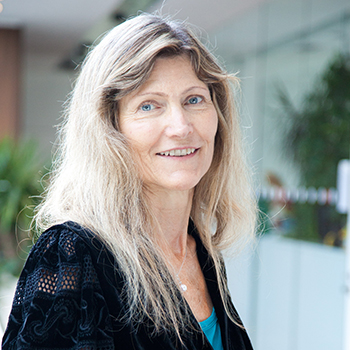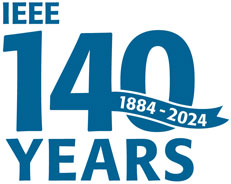
Panelist and 2023 IEEE Alexander Graham Bell Co-Recipient, recognized for the research, development, and realization of multi-channel microelectronic cochlear implants.
Ingeborg J. Hochmair holds Dipl.-Ing. and Dr.tech degrees in Electrical Engineering and a venia legendi in Biomedical Engineering from the Technical University of Vienna, where she, together with Erwin Hochmair, developed the very first microelectronic multichannel cochlear implant, implanted in December 1977 in Vienna. After research work at Stanford University, USA and at the Univ. of Innsbruck she cofounded the company MED-EL, hired the first employees in 1990 and grew the company into a leading global hearing implant group with 30 daughter companies and offices and a team of more than 2500 people supporting implant centers in 137 countries.
With its innovative neuroprosthetic technologies MED-EL now helps individuals of all ages to overcome hearing loss and to restore other body functions that are a barrier to communication and impair the quality of life. Translational research and biomedical engineering activities are the basis for the innovations.
Ingeborg J. Hochmair has (co-) authored 120 publications and numerous patents.
For her scientific achievements she has received various awards such as the Lasker DeBakey clinical medical Research Award in 2013 and the Russ prize of the US National Academy of Engineering in 2015, all for the pioneering work in the area of restoration of the sense of hearing in the deaf. Ingeborg J. Hochmair holds Honorary Doctoral Degrees from the TU Munich, the Univ. of Innsbruck, the Univ. of Bern, the Univ. of Uppsala, the Medical Univ. of Innsbruck and the Univ. of Liége.
Her memberships include being an honorary member of the Austrian Academy of Sciences.
Biography Ingeborg and Erwin Hochmair
The Cochlear Implant (CI) is the first replacement of a sensory organ, enabling deaf persons to hear via a (partially) implanted device. CI-users are able to communicate orally, and many of them enjoy listening to music. Generating sound sensations by electrically stimulating the auditory nerve had been demonstrated already by Volta, but only modern microelectronics made a useable prosthetic device possible.
Inspired by reports of hearing via a single wire electrode inserted in the scala tympany of the inner ear by the Californian ENT-surgeon William House, Erwin Hochmair, at that time Assistant Prof. of electrical engineering at the Technical University in Vienna, considered the development of a device for stimulating the auditory nerve. Looking for a coworker for such a project, he teamed up with the then recently graduated Ingeborg Desoyer (later Ingeborg Hochmair) – despite widespread skepticism in the ENT-community concerning any possible useable outcome of such an effort. Nevertheless, Ingeborg’s enthusiasm and her eagerness to apply her engineering knowledge to the medical field for the benefit of the hearing impaired, was instrumental in starting the project of a multi-channel implant featuring a multi-site intracochlear electrode in 1975.
Among the many different aspects, as well as the large number of unsolved questions of such an approach, they first concentrated on the development of the electronics and the hermetic packaging necessary to protect the circuits from corrosion by aggressive body fluids. The dawning complementary MOS-technology allowed the design of complex low-power circuits, which made this technology ideally suited to match the requirements of implantable devices. Especially its emergent analog circuit capability, despite being a digital circuit technology originally, was instrumental in the design of the innovative circuits needed in the implant.
In late 1977, after two years of development and manufacturing within the university setting, it was implanted, being the worldwide first microelectronic multichannel cochlear implant. This opened the door to experimental psychoacoustic research by Ingeborg and Erwin aiming to determine the specific parameters needed for the development of the coding of sound and, later, of speech signals, as well as new insights into the function of the human auditory system. In comparison, nowadays the development of a new version of a CI-system, e.g., their totally implantable CI, consumes more than 15 years. The ensuing complex systems allow most users high levels of communication capabilities, even despite background noise.
To meet the growing demand, the transition from the university environment to a global industrial scope was accomplished by Ingeborg, now CEO of MED-EL-Group. The number of employees totals 2500 presently, including 400 R&D experts. Approximately 200 translational research co-operations support five CI-categories recently defined by Ingeborg: Classic, Combined, Individualized, Augmented (i.e., able to release of pharmaceutical substances into the cochlea), and Totally Implantable.
Erwin stayed at the university teaching electronic circuit design as well as directing research supporting the development of future CI-designs.
While the correct understanding of a smaller percentage of words and sentences without lipreading in quiet was a big step in1980, there are users of the award winners’ most recent CI-technology, who were musicians before they became deaf and still remain active musicians using their CI – as recently demonstrated at the Sound Sensation Festival (link will be provided)


